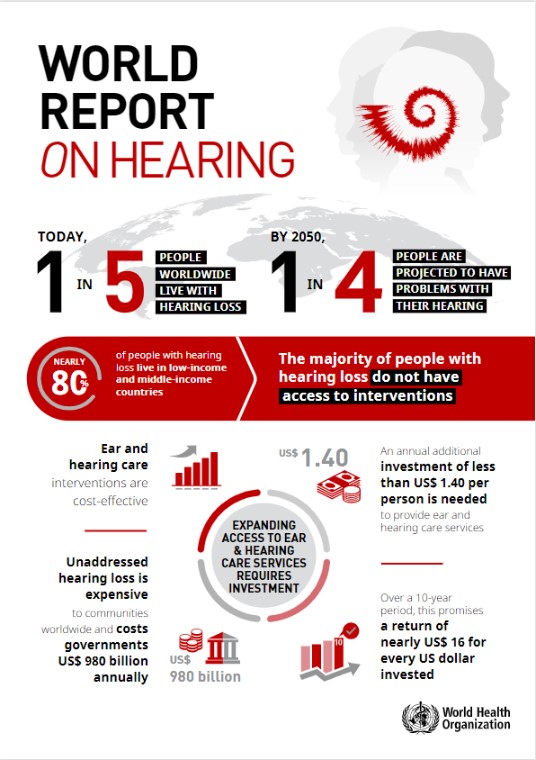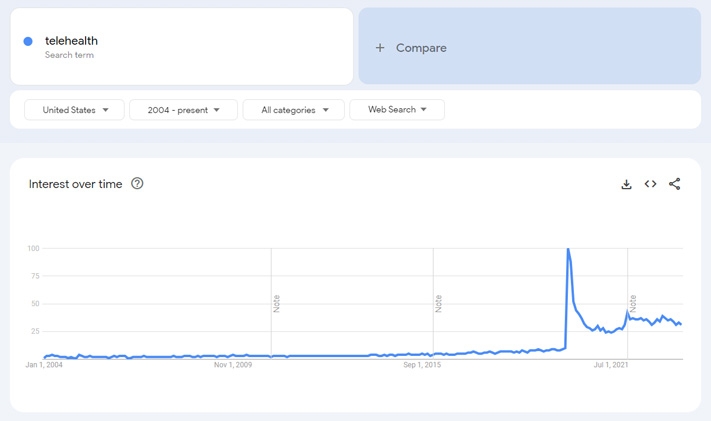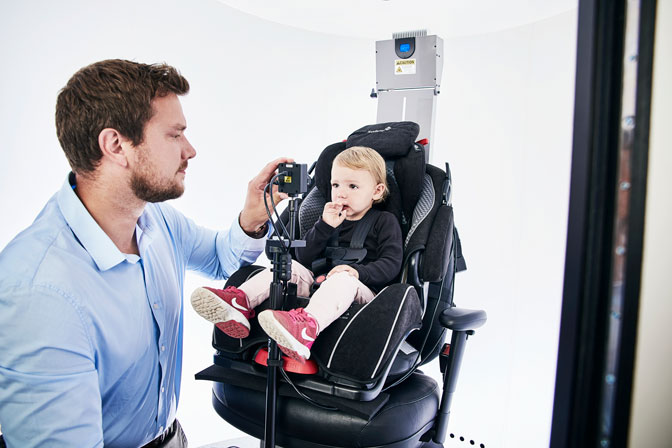Audiology in the future: Looking towards 2030
What does the future hold for audiology? Will audiologists be needed in the future? Four experts give their opinions on the future of audiology, including the growing branch of vestibular audiology.
Reviewed by Liz Fuemmeler, Au.D., Søren Laugesen, Ph.D., Alejandro L. Valdes, Ph.D., and Michelle Petrak, Ph.D.
Adopting to industry changes such as over-the-counter (OTC) hearing aids
Audiology is an ever-changing field, meaning practitioners need to be ready and willing to change their clinical protocols and knowledge to keep up.
With the passage of the Over-The-Counter Hearing Aid Act in the United States, Liz Fuemmeler, Au.D. believes this could spur “many audiologists and students to expand their scope to include more specialty aspects, such as cochlear implantation, auditory processing disorder, and vestibular testing.”
Addressing hearing quality in hearing aid fitting
With tests such as the pure tone audiogram and speech testing in quiet, audiologists have plenty of tools to measure the quantity of hearing. However, the number one complaint reported by hearing-aid users is related to hearing quality – the ability to hear well in noisy situations.
Søren Laugesen, Ph.D., and Research Manager at the Interacoustics Research Unit (IRU), looks forward to being able to address hearing quality in hearing aid fitting:
“I was excited to present the Audible Contrast Threshold (ACT™) test to the world at EUHA 2023 and I’m hoping to see clinicians adopt it. For the first time, being able to fit hearing aids to the individual’s speech‑in‑noise needs should improve the first fits and lead to more people becoming happy hearing-aid users faster.”
Related course: Audible Contrast Threshold: Introduction

The need for more trained audiologists
In their World Report on Hearing in 2021, the WHO could reveal that one in five people worldwide live with hearing loss, projected to be one in four by 2050 (Figure 2).

According to Søren Laugesen, Ph.D., there is a lack of trained audiologists to serve the growing proportion of people with hearing loss:
“My dreams for audiology are strongly connected to one of its global challenges, which is the imbalance between the number of trained audiologists and the number of people in need of hearing rehabilitation. Whatever we can do to further the education of hearing-care professionals will be good, such as some of the recent initiatives from the Interacoustics Academy.”
Automation of hearing screening and diagnostics
Besides education and training, another venue that could reduce the imbalance between people with hearing loss and available hearing‑care services is automation.
Søren Laugesen, Ph.D. elaborates:
“On the instrumentation side, everything we can do to reliably automate screening and diagnostic tests will also help to free up the precious audiological resources. This can be done in a range of ways, going from rule-based approaches from knowledge and evidence such as IA-AMTAS, to machine‑learning‑based approaches that eventually can assist or possibly even replace the diagnostic evaluation of humans.”
Read more: A Deep Learning Approach for Detecting Otitis Media from Wideband Tympanometry Measurements
Remote hearing care
In early 2020, interest in telehealth exploded following the outbreak of the COVID-19 pandemic (Figure 3).

Alejandro L. Valdes, Ph.D. believes we’ll see a lot more remote hearing care going forward:
“People may be 100 kilometers away from a clinic but still have access to hearing care through telehealth and remote solutions, allowing for long-distance diagnosis and treatment.”
An example of this is the pediatric program in Nepal by the Global Foundation for Children with Hearing Loss (GFCHL). Here, community ear health workers (CEHWs) provide remote support to the hospital professionals by serving rural families at health posts located in the Kathmandu Valley.
Read more: Donated Interacoustics equipment makes life‑changing differences in Nepal
The role of audiologists in concussion diagnosis and management
The vestibular testing profile has been growing beyond videonystagmography (VNG) in the last several years, and audiologists are beginning to serve different types of patients that they have not yet been able to.
According to Liz Fuemmeler, Au.D., audiologists have a role to play in concussed patients:
“I am most excited to see how audiologists continue to integrate onto concussion diagnosis and management teams. Because there is no one diagnostic test to say whether a concussion has occurred in an individual, concussion diagnosis and management has relied on the contributions of many different professionals. While audiologists have not been included on these teams in the past, it is well known common concussion symptoms include hearing changes, noise sensitivity, tinnitus, and dizziness.”
Pediatric vestibular testing
Currently, children are only referred for vestibular assessment when they have delays in motor milestones or if parental concerns arise, typically after a child’s first birthday. Children with vestibular deficits are not only at risk for gross motor delays in relation to sitting and walking, but also learning disabilities.
According to Michelle Petrak, Ph.D.:
“Early detection of vestibular dysfunction is a vitally important element in providing appropriate support for infants that will help them attain equal opportunities in society alongside all other children. If we can identify these infants with disabilities earlier, we can start intervention earlier and provide improvements to balance and motor skills very early on.”
However, vestibular evaluation in the pediatric population is limited to available equipment and patient cooperation, with knowledge of the vestibular system and test batteries largely focused on adults:
“Currently, our best tools for evaluation of the young population are VEMP, vHIT, and rotational chairs. But these tests are challenging in infants and small children, and we continue to research better solutions for identifying these children at a younger age,” Michelle Petrak, Ph.D. says.

Dual tasking in vestibular assessments
Dual tasking is exactly what it sounds like, doing two things at one time. For example, walking across the street while talking on your phone. This combination of a cognitive task and a motor task together challenges the sensory systems more than doing a single task.
When assessing a patient’s motor skills while completing cognitive tasks, this may bring out more deficiencies that were not seen in single-task skills, which often occurs following concussions and other neurodiagnostic abnormalities.
Michelle Petrak, Ph.D. elaborates:
“The underlying mechanism for these decrements in dual-task performance in individuals with vestibular disorders is not well understood and we continue to research this area. We have improved our assessment protocols, for example Saccadometry, which is an advanced oculomotor test that involves both a cognitive ‘look away’ task as well as the motor task of moving the eyes. This dual task helps us detect neurological lesions that may have been hidden by the simpler single random saccade task.”
Key takeaways
Audiology is going through an evolution where the role of the audiologist is changing. Legislation may lead to audiologists specializing in subjects such as auditory processing disorder or vestibular testing. Access to new tools may automate tasks and free up audiological resources.
But despite access to new tools, the dialog between the audiologist and the person with the hearing impairment is always going to be essential. And with a large and growing number of people worldwide with hearing loss, the need for audiologists will never diminish, rather the contrary.
Subscribe
By signing up, I accept to receive newsletter e-mails from Interacoustics. I can withdraw my consent at any time by using the ‘unsubscribe’-function included in each e-mail.
Click here and read our privacy notice, if you want to know more about how we treat and protect your personal data.
Similar Topic
Get audiological tips
Subscribe for audiological tips and be the first to know about new products, features and training.
By signing up, I accept to receive newsletter e-mails from Interacoustics. I can withdraw my consent at any time by using the ‘unsubscribe’-function included in each e-mail.
Click here and read our privacy notice, if you want to know more about how we treat and protect your personal data.
